#interactive learning solutions
Explore tagged Tumblr posts
Note
interesting ideas about AI art and by no means am I trying to send hate but I believe majority of people hate AI art is because it's truly just the byproduct of a giant plinko board bouncing through pieces of art made by artists who put love and care and SOUL into their work. A visual product of a math formula. While it's "art" in the most litteral sense, not having a true human behind it putting though and effort into its every detail, for many people (myself included) devalues it from a tradition artists work.
I'm a firm believer in the idea that AI art is inherently unequal to non Ai art, specifically for this reason. (Hope this made sense sorry if it's incoherent)
I agree in that sense there. I personally do not find myself wanting to engage in a work when I purposefully know the creator had used AI to create the entire product. Something something,,,I cannot find myself getting invested in something that is little more than a product. I don't wanna read a fic about my blorbos when it was written by Chat-GPT
I also agree with the idea that a lot of people hate AI art because of this heavily emotional, debatably reactionary mindset that stems from one thing: fairness. It's the same sort of emotion I find one gets if all of the work on a group project gets shafted onto them whilst their fellow peers sit idly by. It feels unfair to sink hours into your craft, spending all this time fighting to develop your skills and flourish as an artist, only to see someone type half a paragraph and have a machine spit back something that looks not half bad. Let's be honest with ourselves here and say that AI art, at least in a visual regard, has progressed quite a bit to the point where most of the mistakes people find can be dismissed as wonky perspective and the line art being a bit fucky, which is something a ton of artists struggle with too
People develop a sort of a superiority complex over it. I can't blame them honestly. A number of times I've felt it too when people tell me they're using Chat-GPT as though it were Google and when I see my family members and friends playing around with AI art. I gotta bite my tongue and choke back a chortle, both because it's kind of a dick move and also because I don't want to relish in this feeling. It's infectious though to feel as though you have an edge over another person just because you abstain from using Chat-GPT or whatever. Not to be all "grrgrgrr you should LOVE Chat-GPT and if you dare to say anything bad then you are EVILL!!" of course though. It's emotions. They're messy, intense, and oftentimes you don't really realize when you're feeling since you get locked into your perspective. Yet, I think it's important to realize a lot of hatred of this generative AI stems from emotions. Reactionary ideals and claims stem from emotions after all
I think ultimately what the conversation about generative AI should revolve around is about the concerns of labour. The several strikes from a while back from VFX artists and scriptwriters come to mind. They are most at stake from generative AI as tools like Chat-GPT are cheaper and more cost-effective than paying an actual employee for their time and effort. I would also mention the environmental issues, but if we were to talk about that we would also have to acknowledge the fact that so, so much water is being used up daily to generate power for servers. Hell, this post alone will probably contribute to drying up some marsh in the greater scheme of things
Anywho yada yada TL;DR: I agree yes but I also think it's important to recognize that a good chunk of your hatred to Chat-GPT stems from feeling cheated and a sense of pride and superiority over others for simply not using it. There is no quality to Chat-GPT that makes it inherently evil. I can't get upset at my grandma for sending me a photo of her and her dog that went through an AI anime filter. I can feel maybe some exhaustion when seeing a fellow classmate using Chat-GPT to write their essay, but ultimately I write my own work for the love of the game. I can get upset however at those in higher power who use it to push artists out of jobs. Chat-GPT is a tool that has its pros and cons and I think it's reductive to just basically sit there and hiss like a vampire when presented with a cross when faced with the mere word "AI", especially when your only big argument for disliking it is based purely in feeling cheated when someone types a prompt into a program and art that would've taken you seven hours to draw gets spit out in about a minute or two
#sp-rambles#Not to mention there's nuance to be had when discussing students and employees using AI to do menial tasks#I'd rather students use something like Wolramalpha or whatever to do their math homework as Chat-GPT is functionally useless#I've seen it straight-up make up proofs and just do shitty math that SEEMS right on the surface but is meaningless when actually applied#And I also would hope that a student would write the damn essay instead of handing it off to Chat-GPT#As essays (in particular crit lit ones) are designed so you show the capacity to analyze and think about ideas presented to you#But ultimately I think Chat-GPT is seen as a release from these things since let's be real it is pretty agonizing to do homework at times#It's a convenient solution that encourages a person not to participate and learn but to hand off their work onto a tool#It provides respite. It saves one from restless nights and staying awake till the morning churning out a barely comprehensive paper#Once more I do not like generative AI. I don't use Chat-GPT#I think it is only important to see the other side. To comprehend why a person may do things and to recognize your own short-comings#For example I've interacted with a number of international students who have said they use Chat-GPT or other generative AI to help study#because English is their second language and they can't afford to sit there in agony trying to understand something in a unfamiliar languag#Not when their families back home are paying 20 grand a semester to help them get a degree and they also need a to work eight hours to live#There's a nuanced discussion to be had here other than generative AI good or bad#Anyways enough rambling I need to get back to mass reblogging sad white boy and yellow cloak man yaoi and watch YouTubers play video games#ask
9 notes
·
View notes
Text
sharing some thoughts about deactivating here because it’s been difficult pondering idk.
#god i really really don’t want to do this. but i have to but i don’t want to but i have to but i don’t want to. and so on. you get the gist#though i guess i am more not wanting to let go of an idea or fantasy rather than reality#like i always wanted to be an active participant in fun oc art fandom writing etc etc communities#but all i really did was make way too many people uncomfortable with my worthless stuff.#like it and me are just not built for interacting with people lmao. especially when it comes to stuff like my characters or uh.#i don’t know you can’t call it art or writing just uh. creations i guess.#and like i knew that before i made this blog but then people started interacting with me and i thought hey maybe this’ll work out maybe i#can be better and then i so wasn’t. and for that i am very sorry.#(and i mean this is not the main reason why i feel like i have to do this but i can’t just go back like nothing happened on here lmao.#i deleted 90% of my shana posts i had/am having a crashout i gotta at least follow through after being so embarrassing#after being even more insufferable than usual haha. and if i stayed there would be even more people who feel obligated to stay around#i feel. and i so don’t want that. so just one more reason why i gotta be brave and just fucking do it.)#also i do realise that there’s the possibility of not deactivating and just logging off and leaving but every time i took a break like that#i always like felt a bit ‘better’/delusional & thought it’d be ok to return. sure that’ll happen again.which is why i have to be so drastic#like even if i made a new blog i know myself well enough to know that i’ll be too embarrassed to reach out to anyone again.#so it would really be a working solution to this problem. i really should just do it.#romeo’s wretched rambles#also a message to everyone telling me that they like shana and that he’s not a shit character to obsess over & more importantly share#with folks: appreciate the sentiment but there’s a lot of his evil you don’t know about.#i was implying some stuff here and there and some people i’ve told more privately but even they are missing like 25% of the shana.#those being the absolute worst parts of him. i am still absolutely obsessed with him but that’s my error to fix and i can’t subject#people to that anymore in good conscience. seeing people say they like him actively feels like i’m pulling a shana myself and deceiving#people with lies of omission sometimes. remember that lol. obviously ik that there r big differences but sometimes it just feels awful stil#so maybe he’s better contained in a separate private blog that i can torch once i get over this rot and just be done with this fucking char#again i don’t mean to say that i don’t appreciate the support but i’m sure many of your guys’ opinions would change If You Knew. you know.#(god. with the lies of omission thing. every day i learn more abt how i subconsciously write things that make me deeply uncomfortable lol)#(and that i fear. like. that wasn’t even intentional when i gave him that trait. i just realised that while typing this pointless mess lmao#anyways. thanks for readin if you made it this far. send me anon hate or something. hit me with an anvil and spit on my corpse if you will#i hope that at least by the end of this week i will have put my brave pants on and decided on what to do. sorry for being so annoying.
8 notes
·
View notes
Text
going full circle and making an au where actually it's Maria Elena Lucia Panadero-Cheng, holder of the ladybug miraculous under the title Bruja Rouge. adrien idk but he's finally gonna go by Grimalquin and he was raised by his grandma for most of his life so he says absolute dork shit like "Great Scott!" or whatever the french equivalent is. this is the only post this is all you're getting
#she my french mexican chinese shawty call that cheese beans and rice.#maria is picked on at school mostly because she's a delinquent and her french isn't super great.#she speaks mostly in spanish as BR. grim the english nerd boy understands and is technically able to respond in spanish?#but eventually their dynamic is just each responds in their own language#sabine cheng and león panadero run an okay bakery and are trying very hard to put maria through private school.#this puts a lot of stress on them which then puts a lot of stress on maria#therefore she tends to lash out violently as Bruja Rouge. despite this she's still quite clever she just tends to let her emotions get the#better of her. grim is by contrast a little more reserved with violence at the cost of being a bit of a coward. they both get their#respective miraculous because they each serve as lessons for their holders. BR needs to work on pacifist solutions whereas grim needs to#learn the importance of being assertive#as for civ drama they mostly don't interact. different classes and whatnot. maybe adrien ends up being her tutor?#(we should give him a new name too maybe. Augustin? Anatole? hm let's go with Augustin)#Augustin ends up tutoring her and is smitten
7 notes
·
View notes
Text
Talking to [leftist/socialist/progressive/whatever] white people as a brown girl is always an experience
#🐈⬛⚜️#A couple weeks back I was stopped by these uni students who were promoting a convention and advocating for Palestine#I was really sad and tired then so I was like sure. let's chat#I signed a petition and began talking to these 2 girls#One was a white girl. the other wasn't. could not pinpoint her background though#Anyways. we talked about the state of the world and Palestine and how the US and by extension the Western World has failed them#(which is a topic of its own because the Western World did not 'fail Palestine' they literally wanted this annihilation to happen#and have been an active participant in it)#And I pointed how ultra rich Arab countries have completely turned a blind eye to it but poorer countries such as Yemen. Lebanon have#been doing so much. despite their own vulnerable position#And this girl said but they're still not doing enough. they could lend military help#I was just disappointed because it doesn't take more than 15 seconds to realise why a regional war is not the solution#By virtue of wanting justice. I would want the IOF to be blown up too but that's not the solution#simply because the casualties will be the civilians of all of these countries and we cannot put millions of people at risk#And she kept telling me about how they're a socialist group. and she was also kind of taken aback by how much thoughts I had about this?#They're having a convention on Socialism and co (social issues. Marxism and all that jazz) next month and that I should consider cominv#Then she hit me with 'The entry is only $90' and there's a student bundle where you can get a book and a tote bag#Honestly funny as shit#And she kept insisting I should buy the book. it was 'Introduction to Marxism' I believe#I did not know how to tell her that I did not want to read that. and even if I did I would just pirate the Communist Manifesto#Anyways. interesting experience and it did make me focus back on how different Brown Leftists and white leftists are#I like to give them grace because it's hard to know context and history and social rules about somewhere you haven't lived or grown up#But I do believe if you're advocating for another group of people. you need to learn and understand first and foremost#I actually don't know what to make of that whole interaction tbh
8 notes
·
View notes
Text
IETM for Beginners A Quick Guide to IETM Code and Pixels
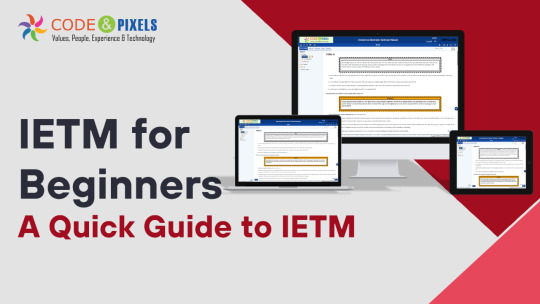
IETM: Interactive Electronic Technical Manual
Training Aids to Defence Client
If you are a supplier of defence then along with the system/equipment you also need to provide Training Aids
(CBT) — Computer-Based Training
Charts and Bloups
Video Film
Training Work Modules
Manuals Hard Copies
IETM
Evolution of Documentation in Defence
Before — Hardcopies and PDFs in DVDs (Upto 2015)
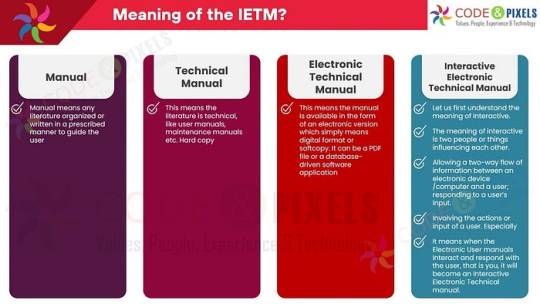
What is the meaning of the IETM?
Manual: Manual means any literature organized or written in a prescribed manner to guide the user.
TechnicalManual: This means the literature is technical, like user manuals, maintenance manuals etc. Hard copy
Electronic Technical Manual: This means the manual is available in the form of an electronic version which simply means digital format or softcopy. It can be a PDF file or a database-driven software application.
Interactive Electronic Technical Manual:
Let us first understand the meaning of Interactive. The meaning of interactive is two people or things influencing each other.
Allowing a two-way flow of information between an electronic device /computer and a user; responding to a user’s input.
Involving the actions or input of a user. Especially
It means when the Electronic User manuals Interact and respond with the user, that is you, it will become an Interactive Electronic Technical manual.
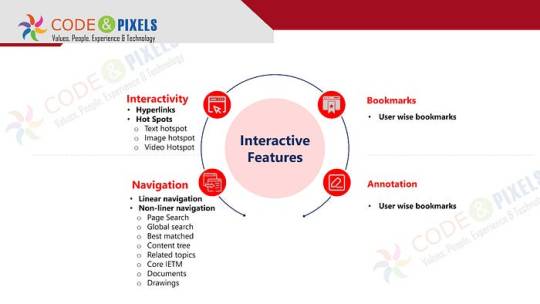
Interactive Features
Interactivity
Hyperlinks
Hot Spots
Text hotspot
Image hotspot
VideHotspot
Bookmarks
User wise bookmarks
Navigation
Linear navigation
Non-liner navigation
Page Search
Global search
Best matched
Content tree
Related topics
Core IETM
Documents
Drawings
Annotation
User wise bookmarks
The documents and pages are many hence, for easy and fast accessibility complete content is converted and stored as a database.
Whenever the user wants some information, IETM software produces the information in a fraction of a second.
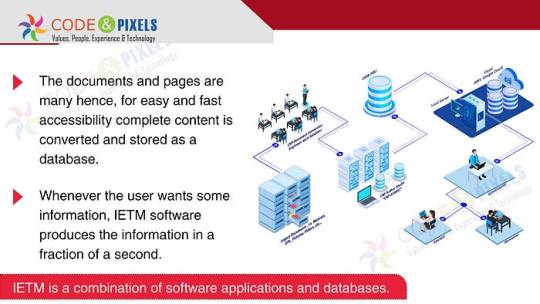
Use or Purpose of the IETM?
The purpose of the Manual is to give information related to the equipment to the end user for quick reference.
All the technicality is written in detail so that when an issue arises, the user can refer to the manual, as every time OEM or technical person or subject matter expert might not be available on the spot to resolve the issue.
If the manual has 10 pages users can refer easily.
But any system used by the defence will have multiple manuals and thousands of page counts and many times a user has to cross-refer between manuals, intra-manual and inter-manual to resolve the issue.
Referring to 10- 15 hard-copy or even soft-copy books simultaneously will be difficult and time-consuming.
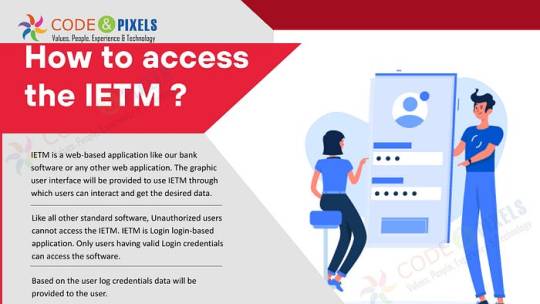
How to access the IETM ?
IETM is a web-based application like our bank software or any other web application. The graphic user interface will be provided to use IETM through which users can interact and get the desired data.
Like all other standard software, Unauthorized users cannot access the IETM. IETM is a Login - login-based application. Only users having valid Login credentials can access the software.
Based on the user log credentials data will be provided to the user.
IETM has 2 types of Users and one Administrator
Maintainer
Operator
If the operator logs in, the user gets all the content related to operator use, similarly if the maintainer logs in only maintenance-related content is visible for that user.
Ideally, all the content is available for both users, because the purpose of the IETM is to refer to the manual to fix the issue.
Administrators can create users who can see the user’s navigation and log-in history and interact with the users using user dashboards through Annotations.
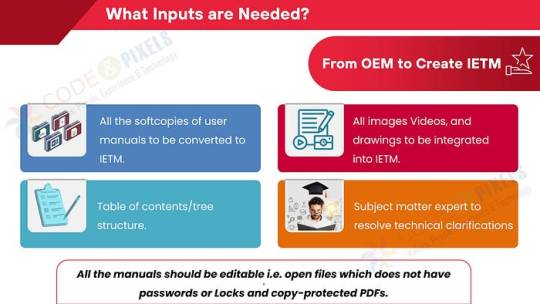
What Inputs are Needed? (From OEM to Create IETM)
All the softcopies of user manuals to be converted to IETM.
All images Videos, and drawings to be integrated into IETM.
Subject matter expert to resolve technical clarifications
Table of contents/tree structure.
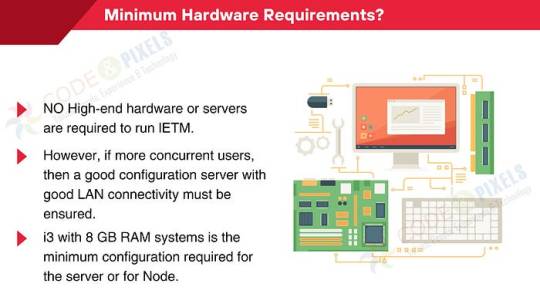
Minimum Hardware Requirements?
NO High-end hardware or servers are required to run IETM.
However, if more concurrent users, then a good configuration server with good LAN connectivity must be ensured.
i3 with 8 GB RAM systems is the minimum configuration required for the server or for Node.
Deliverables
BASED DB (Manuals are covered in the Database)
IETM VIEWER Software
User Manual and Installation Manual
Standards — compliance
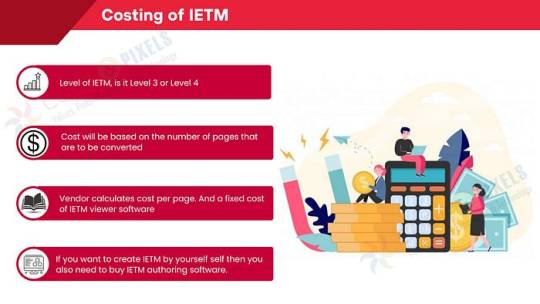
Costing of IETM: (Interactive Electronic Technical Manual)
Level of IETM, is it Level 3 or Level 4
Cost will be based on the number of pages that are to be converted
The vendor calculates the cost per page. And a fixed cost of IETM viewer software
If you want to create IETM by yourself self then you also need to buy IETM authoring software.
What are these Levels?
Level — 1 is any PDF file
Level — 2 is a PDF file with hyperlinks from the table of contents to the body etc.
Level — 3 is an HTML application. More hyperlinks, simple search, a content tree having log a screen with a hardcoded username and password and supplied in the format of EXE so that Windows can easily open
Level — 4 is Software plus Content/manuals converted as Database
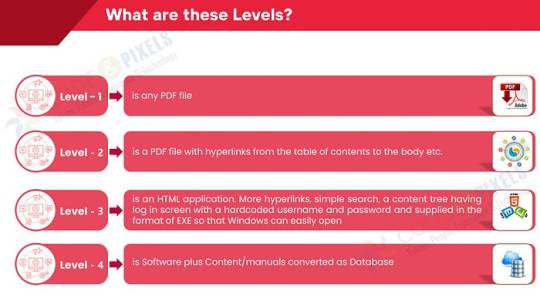
Regarding Level — 5, rest assured, till 2028 it will be Level — 4 only. As of now, there is nothing practically called Level — 5. Few are calling virtual reality and Augmented reality and Artificial intelligence Level — 5.
Pulling data from many user inputs and analyzing and giving results are done in Level — 5. IETM software cannot pull the data from various real-time points as No OEM will give the real-time information to third-party software directly. Yes, if the information is available offline, then that information can be imported into IETM and can be used as a reference.

#ietm#software#technology#ietm developement#ietm code and pixels ietm hyderabad#ietm software#elearning#code and pixels#ietm level iv#codeandpixels#ietm level 4 software requirements#technical documentation#ietm document#ietm documentation#interactive electronic technical manual#Ietm Service Providers#Ietm Software Designers of India#Software Development Company#Elearning Solutions Company#E Learning Content Development Company#Online Education#Digital Education#Digital Content#Software Development Solutions#Elearning#Ietm Developers#Econtent Development#Elearning Solutions Providers#Econtent Developers#Econtent
3 notes
·
View notes
Text
Transformative Digital Classrooms Powered by AI Technology
Mafatlal Technologies offers smart digital classroom solutions that enhance teacher productivity and student engagement. With AI-assisted lesson tools, interactive content, and seamless access across devices, the platform supports hybrid, inclusive, and experiential learning environments.
0 notes
Text
AI-Based Digital Education for Students | Smart Learning

AI-Based Digital Education Solutions: Transforming Learning
In recent years, the integration of artificial intelligence (AI) into education has transformed the way students learn and interact with knowledge. AI-based digital education solutions are rapidly becoming a core component of modern learning environments, offering personalized learning experiences that cater to the unique needs of every student. The potential of smart learning technology is limitless, providing more engaging, efficient, and effective educational tools that bridge the gap between traditional and digital education.
In this blog, we will explore some of the best AI-based digital education solutions for students and how they are reshaping the future of education. We will also delve into how these solutions make technology in primary education more accessible and how AI is enhancing learning for students from preschool to grade 10.
The Role of AI in Education
Artificial Intelligence has come a long way from being a futuristic concept to becoming a tangible tool in educational settings. At its core, AI is designed to mimic human intelligence and decision-making, making it ideal for tasks like personalized learning, automated grading, and data-driven insights.
In education, AI is primarily used to adapt to the learning needs of individual students. With AI-based tools, educators can provide customized lesson plans, offer real-time feedback, and support students in mastering difficult concepts. These systems can analyze a student’s progress and offer suggestions for improvement, making learning more interactive and efficient.
Key AI-Based Digital Education Solutions
1. Personalized Learning Platforms
Personalized learning is one of the most exciting applications of AI in education. AI-powered learning platforms like Edutech Era are designed to cater to the individual needs of each student. These platforms use data analytics and machine learning algorithms to track student performance and provide tailored content, ensuring that students progress at their own pace.
For instance, AI-based systems can identify areas where a student is struggling and offer targeted exercises to improve those specific skills. Similarly, advanced students can be given more challenging content to keep them engaged. This level of customization makes it easier for students to learn in a way that suits their learning style and pace, leading to better outcomes.
2. Smart Content and Interactive Learning
AI is also changing the way educational content is created and delivered. AI-based smart content, such as interactive videos, gamified exercises, and virtual simulations, makes learning more engaging. These tools help students understand complex concepts by breaking them down into interactive modules that can be visualized and manipulated.
For example, virtual labs in subjects like science or mathematics allow students to experiment with concepts they might not be able to in a traditional classroom. Through AI, these tools can adapt the level of difficulty based on the student’s understanding, ensuring a more engaging and effective learning experience.
3. Intelligent Tutoring Systems (ITS)
Intelligent Tutoring Systems are another form of AI-powered learning tools. These systems act as virtual tutors, offering personalized instruction and immediate feedback to students. ITS platforms assess a student’s strengths and weaknesses and provide tailored resources to help them improve.
Unlike traditional tutoring, ITS systems are available 24/7, allowing students to receive support whenever they need it. These systems are powered by natural language processing (NLP) and machine learning algorithms, which enable them to understand and respond to student queries just like a human tutor would. They are particularly beneficial for students who need extra help outside of school hours or for those in remote areas where access to tutors may be limited.
4. AI-Driven Assessments and Analytics
AI is also revolutionizing assessment methods in education. Traditional tests often fail to capture the depth of a student’s understanding, but AI-based assessments can analyze a student’s learning patterns, progress, and areas of difficulty in real time. This allows educators to identify potential issues and intervene early, providing a more comprehensive evaluation of student performance.
AI-driven analytics can generate detailed reports on individual students, offering insights into their strengths and areas for improvement. This data-driven approach helps educators and parents make more informed decisions regarding a student’s educational needs and growth.
5. AI-Powered Language Learning Apps
Language learning has become much easier and more effective with the help of AI-powered apps. These apps use speech recognition, natural language processing, and machine learning to teach students new languages in a personalized way. Platforms like Duolingo and Babbel use AI to adapt their lessons to the user’s proficiency level, ensuring that the content is always challenging yet accessible.
For young learners, AI-based language tools can make language acquisition more engaging and fun through interactive games and challenges. The use of AI ensures that students receive immediate feedback, which accelerates their learning process.
6. AI for Special Education Needs
One of the most significant advantages of AI-based learning technology is its ability to support students with special educational needs. AI-powered tools can help students with learning disabilities, such as dyslexia or ADHD, by providing personalized learning experiences that accommodate their unique challenges.
For example, speech recognition and text-to-speech technologies can assist students who have trouble reading or writing. Similarly, AI-based platforms can adjust the pacing and complexity of lessons to suit students with different cognitive abilities, ensuring that all learners receive the support they need to succeed.
7. AI-Powered Adaptive Learning Systems
One of the most promising aspects of AI in education is the development of adaptive learning systems. These systems use machine learning algorithms to assess a student’s level of knowledge and adjust the curriculum accordingly. For example, an adaptive learning platform might present easier questions if a student is struggling with a concept, or it might increase the complexity of questions for advanced learners to maintain their engagement.
This dynamic approach ensures that every student’s unique learning trajectory is supported, rather than forcing all students to follow the same linear educational path. In the long run, adaptive learning systems help maximize individual learning outcomes by providing customized resources that address both strengths and weaknesses.
Platforms like Knewton, Smart Sparrow, and DreamBox Learning offer adaptive learning experiences that cater to K-12 students, offering math, reading, and other foundational subjects with personalized learning journeys.
8. AI-Driven Classroom Management Tools
AI isn’t just helping students; it’s also providing valuable support to teachers by streamlining classroom management tasks. Educators can use AI-based tools to track student attendance, analyze classroom behavior, and identify patterns in students’ performance. By analyzing these data points, teachers can quickly determine which students may need additional support or which areas of the curriculum may need revisiting.
Moreover, AI-powered tools can help with administrative tasks such as grading, lesson planning, and providing feedback. By automating repetitive tasks, AI gives teachers more time to focus on individualized teaching, fostering a more engaging and supportive classroom environment.
For example, AI-based tools like Classcraft and EdTech companies like ClassDojo provide behavior-tracking systems and classroom engagement features that help teachers stay connected with students’ emotional and academic needs.
9. AI in Assessment and Evaluation: Beyond Standardized Tests
AI’s ability to evaluate student performance is another area where it can truly shine. Traditional assessment methods, such as standardized tests, fail to provide a complete picture of a student’s understanding, creativity, and critical thinking skills. AI-based assessment tools, on the other hand, can evaluate more than just rote memorization; they can measure how well students grasp concepts, think critically, and apply their knowledge in real-world scenarios.
For instance, AI can evaluate how students approach problem-solving, assess their reasoning process, and provide feedback on how they can improve. This form of assessment ensures that learning is more holistic, allowing for a more comprehensive evaluation of a student’s abilities. Furthermore, AI can provide real-time feedback to students, helping them understand mistakes as they happen, which enhances the learning process.
A great example of this is the platform Turnitin, which not only helps in plagiarism detection but also assesses writing skills and creativity. AI-driven grading tools also allow educators to grade assignments faster and more accurately, reducing human error and bias.
10. Gamification and AI: Making Learning Fun
Gamification in education has gained significant traction in recent years, and AI is playing a pivotal role in making it even more effective. By using game-like elements, such as levels, rewards, and challenges, educators can engage students in a way that traditional methods can’t. AI-powered games adapt in real time to the student’s progress, increasing difficulty as students improve their skills and providing rewards or incentives for achievements.
Learning platforms that integrate AI with gamification, like Kahoot! or Quizlet, are transforming educational experiences into interactive and enjoyable journeys. For example, Kahoot! offers real-time quizzes that adapt to student responses, fostering a competitive yet collaborative learning environment.
As students progress through these educational games, AI helps track their performance and provides instant feedback, enabling them to retain knowledge better than with traditional teaching methods. This combination of learning and play creates a more stimulating environment that encourages consistent engagement and motivation.
11. AI for Remote Learning: Bridging the Gap
One of the biggest challenges in education over the past decade has been the accessibility of learning. The COVID-19 pandemic highlighted the need for robust digital education solutions to ensure that students could continue their education remotely. AI-based digital education solutions provide an essential bridge for students who may not have access to traditional in-person education due to geographic or socioeconomic barriers.
Remote learning platforms powered by AI can replicate much of the personalized experience that students receive in a physical classroom. Through video-based lessons, AI tutors, and real-time feedback, students can engage with course materials in a way that is responsive to their individual needs. Moreover, AI-powered tools are essential in tracking student engagement, ensuring that no student falls behind.
Platforms like Zoom and Google Classroom have evolved to integrate AI features, such as automated attendance tracking, AI-driven lesson recommendations, and intelligent content delivery systems, helping students learn at their own pace, no matter where they are located.
12. AI in Collaborative Learning and Peer Interactions
AI can also facilitate collaboration among students, encouraging peer interactions and group learning. AI-powered tools such as collaborative platforms, group project management, and communication apps help students work together efficiently, even when they are physically distant.
For example, virtual classrooms can leverage AI to group students according to their strengths or learning styles, facilitating more effective group discussions and projects. AI can also help track group dynamics and suggest ways for team members to improve collaboration or communication, ensuring a more effective group learning experience.
Tools like Slack for Education, Padlet, or collaborative platforms like Miro are increasingly integrating AI to help students collaborate seamlessly. This collaboration enhances problem-solving, critical thinking, and communication skills, preparing students for real-world challenges in their academic careers.
13. AI and Ethics in Education
As with any transformative technology, the rise of AI in education brings up ethical considerations. Ensuring that AI systems are designed and implemented in ways that benefit all students is crucial. Issues such as bias in algorithms, data privacy, and access to technology must be addressed to ensure that AI serves every learner equally.
Educational institutions must work with policymakers, developers, and educators to ensure that AI tools are transparent, equitable, and fair. For instance, it is vital to ensure that AI algorithms do not reinforce biases in student evaluations or perpetuate stereotypes, which could negatively impact certain groups of students.
Moreover, institutions must safeguard student data privacy, ensuring that personal information is protected and used ethically. Data privacy regulations, such as the General Data Protection Regulation (GDPR) in Europe, are crucial in protecting student data from misuse.
The Future of AI in Primary Education
AI-based learning solutions are particularly impactful in primary education, where the foundation of knowledge and skills is built. Smart learning technology helps young learners develop essential skills in subjects like math, reading, and science by offering personalized learning experiences. AI ensures that the content is age-appropriate, engaging, and aligned with educational standards.
Platforms like Edutech Era are specifically designed to help students from preschool to grade 10 develop a strong academic foundation. By incorporating AI into the learning process, these platforms provide interactive and gamified content that captures students’ attention while promoting deep understanding.
Moreover, AI in primary education allows for more efficient classroom management. Teachers can use AI to track student progress, identify areas where students need extra help, and manage their time more effectively. AI can also automate administrative tasks, such as grading and scheduling, which gives educators more time to focus on teaching.
Benefits of AI-Based Learning for Students
Personalized Learning: AI adapts to the unique needs and learning pace of each student, ensuring that no one is left behind.
Engagement: Gamification and interactive content keep students engaged and motivated to learn.
Immediate Feedback: AI-based systems provide real-time feedback, allowing students to correct mistakes and learn faster.
Accessibility: AI-based tools make learning accessible to students with special needs and those in remote locations.
Efficient Learning: AI helps students master concepts more quickly and effectively by offering personalized exercises and resources.
Wrapping Up: AI’s Role in Shaping Future Education
AI is not just a passing trend in education, it’s a transformative force that’s reshaping the way students learn, educators teach, and schools operate. From personalized learning experiences to real-time feedback and AI-powered assessments, the benefits are clear. As AI continues to evolve, it will likely introduce even more sophisticated tools that cater to every learner’s unique needs.
For digital education platforms like Edutech Era, AI provides an essential foundation for delivering smart learning solutions that help students from preschool to grade 10 develop critical thinking, problem-solving skills, and academic knowledge. By leveraging AI, these platforms are preparing students for the challenges of tomorrow’s world, giving them the tools they need to succeed in an increasingly digital and complex world.
As we embrace these cutting-edge technologies, it’s essential that we strike a balance between technological advancement and the human touch that makes education meaningful. The combination of AI and compassionate, responsive teaching will undoubtedly create an educational environment that empowers students and fosters lifelong learning.
With the continued integration of AI, digital education is no longer a distant future but a present-day reality that has the power to shape the future of learning for generations to come.
Challenges and Considerations
While AI-based digital education solutions offer numerous benefits, there are also challenges to consider. Data privacy and security are top concerns, as AI systems collect and analyze sensitive student data. It is crucial for educational institutions to ensure that these systems comply with privacy laws and safeguard student information.
Moreover, there is a need for teachers to be adequately trained to integrate AI into their teaching methods. Without proper understanding, the effectiveness of AI-based tools may be limited. Educators must be equipped to use these technologies in a way that enhances learning rather than replacing the teacher-student relationship.
Conclusion — AI-Based Digital Education Solutions for Students
AI-based digital education solutions are revolutionizing the way students learn, offering personalized, engaging, and efficient tools that cater to their unique needs. From personalized learning platforms and intelligent tutoring systems to AI-driven assessments and special education tools, the impact of AI in education is undeniable.
As we continue to embrace smart learning technology, the future of education looks brighter than ever. With platforms like Edutech Era leading the way, students from preschool to grade 10 can benefit from AI-powered solutions that enhance their learning experiences and prepare them for the challenges of tomorrow.
#AIbasedlearning #digitaleducationsolutions #smartlearningtechnology #personalizedlearning #interactivelearning
#AI-based learning#smart learning technology#personalized learning#interactive learning#digital education solutions
0 notes
Text
How Educational Mobile App Development Is Revolutionizing Online Learning in 2025

In recent years, the education sector has experienced an unprecedented digital transformation. Traditional classrooms are evolving, learning methods are changing, and mobile technology is at the forefront of it all. The rise of educational mobile app development is shaping the future of learning by making it more accessible, interactive, and personalized. By 2025, adopting mobile-first strategies will be essential.
From online learning apps to advanced AI in educational applications, today’s mobile solutions provide powerful tools that redefine how students and educators interact. This article explores the impact of e-learning mobile apps, key trends, benefits, essential features, and why now is the ideal time to invest in an educational app development company.
Why Online Learning Apps Are Leading the Future
The global demand for mobile education platforms is growing rapidly. With increased smartphone penetration and improved internet accessibility, students of all ages can now learn from anywhere at any time. Online learning apps have made this possible by offering flexible access to educational content, eliminating the need for physical classroom attendance.
Today’s students seek instant access to content that matches their pace and learning style. This demand has fueled the success of e-learning application development and mobile-based education systems worldwide.
Benefits of Educational Mobile Apps
One of the most significant advantages of e-learning mobile apps is their ability to eliminate barriers to education. With features like remote access, multilingual support, and 24/7 availability, these platforms ensure that education reaches everyone. Here are some compelling benefits:
1. Personalized Learning Experiences
Many modern apps utilize AI to deliver content tailored to each student’s performance and learning style. These personalized learning apps adapt in real-time, creating dynamic pathways that keep learners motivated.
2. Increased Student Engagement
Gamified learning, interactive quizzes, and multimedia content provide immersive experiences. This boosts student engagement and retention, making mobile apps more effective than traditional textbooks.
3. Real-Time Feedback and Analytics
With virtual learning solutions, students can receive instant feedback. Teachers can also monitor progress through built-in analytics, enabling them to address learning gaps promptly.
4. Cost-Effective Learning
Mobile learning solutions reduce costs for both institutions and learners. There’s no need for physical infrastructure or expensive printed materials; all you need is a smartphone or tablet.
Education App Development Trends in 2025

The world of EdTech app development is evolving rapidly. Here are some top trends shaping the industry in 2025:
1. Integration of AI and Machine Learning
AI is revolutionizing students' learning, from smart content recommendations to automated grading. AI in education apps helps personalize and streamline the learning process.
2.AR and VR for Immersive Learning
Augmented and virtual reality technologies are making education more interactive and hands-on. Imagine a history lesson in which students can virtually explore ancient Rome or a biology class in which they can examine 3D models of human organs.
3. Microlearning Modules
Bite-sized, topic-focused lessons are gaining popularity. The best mobile apps for online learning now offer microlearning paths, ideal for busy learners or corporate training.
4 . Voice-Enabled Interfaces
Voice search and command functionality are making mobile apps more accessible to differently-abled users and those who prefer auditory learning.
Top Features in Educational Mobile Apps
A successful educational app should prioritize user experience and learning outcomes. Here are the key features that every educational software development project should include:
User-Friendly Interface: Easy navigation and intuitive design ensure that students and teachers can use the app without confusion.
Offline Access: Essential for users in remote or low-connectivity areas.
Interactive Content: Multimedia lessons, animated videos, and gamified quizzes keep users engaged.
Push Notifications: Keep users informed about deadlines, assignments, and live classes.
Progress Tracking & Analytics: Real-time dashboards help users monitor performance, allowing educators to intervene when necessary.
The Future of Learning with Mobile Apps
The future of learning with mobile apps is not just about digital convenience; it’s about transforming the educational experience. These tools will continue to evolve into powerful learning ecosystems, connecting students, educators, and institutions in real time. Imagine smart apps that:
Predict learning outcomes using data analytics.
Offer real-time tutoring through AI-powered bots.
Utilize wearable devices to monitor student attention levels.
The potential is immense, and we are only beginning to scratch the surface.
Why Invest in E-Learning App Development in 2025?
If you're an educational institution, entrepreneur, or tech investor, now is the perfect time to partner with an educational app development company. Here’s why:
High Market Demand: The global e-learning market is expected to surpass $500 billion by 2028.
Scalability: A single app can reach thousands of students globally without physical expansion.
Long-Term ROI: Once built, apps require minimal operational costs and can generate recurring revenue through subscriptions or licensing.
By investing in e-learning app development, you're not just building a product—you’re contributing to a smarter, more connected world.
Choosing the Right Education App Developers
The success of your mobile app depends largely on the development team. Professional education app developers will understand both the technical and pedagogical needs of the app.
When selecting a development partner, look for:
A proven portfolio in educational software development
Familiarity with mobile learning solutions
Knowledge of trends in EdTech app development
Ability to integrate AI, AR/VR, and cloud-based technologies
Cost of Developing an Education Mobile App
The cost of developing an education mobile app can vary depending on factors like:
App complexity (basic, medium, advanced features)
Platform (Android, iOS, or both)
Integration of technologies (AI, AR/VR, payment gateways)
Development time and location of your team
Typically, a basic app starts from $15,000, while advanced AI-powered platforms can cost upwards of $50,000. However, with the right monetization strategy, your ROI can be substantial.
Conclusion
The shift to mobile-based education systems is no longer a trend—it's the new standard. With the increasing reliance on smartphones and digital learning, education mobile app development is crucial for staying ahead in the evolving education landscape.
From online learning apps and virtual learning solutions to personalized learning apps and AI in education apps, mobile platforms are changing how we teach and learn. As we navigate 2025 and beyond, the institutions and businesses that embrace these technologies will lead the way in delivering impactful, inclusive, and modern education experiences.
Are you ready to launch your educational app? Partner with a trusted educational app development company today and play a role in shaping the future of learning.
#Mobile App Solutions for Education#Education Mobile App Development Company#Online Learning App Development#Top E-Learning App Development Company#E-Learning App Development#Educational Mobile Application Development#EdTech App Development Services#Custom Education App Development#Build Your E-Learning App#Custom Learning Management System (LMS) App#Mobile App Development for Education#Interactive Learning App Development#Mobile Learning App Development#E-Learning Mobile Solutions
0 notes
Text
On-demand and Customized Learning Management System
Tecnolynx designs adaptive learning pathways through a personalized, reliable, and user-friendly learning management system (LMS) platform. Our skilled developers excel in creating custom LMS solutions, handling integration, and overseeing implementation, all tailored to fit your unique learning requirements.
Looking for a powerful LMS solution? Connect with Tecnolynx for a customized and robust learning management system tailored to your needs.
#Learning Management System (LMS)#eLearning solutions#LMS development#Customized eLearning platforms#Online training software#Virtual learning environments#Educational technology solutions#Learning content management system (LCMS)#Interactive learning experiences#Personalized learning platforms
0 notes
Text
Transform Customer Service with Deep Brain AI Avatars!
Welcome to our deep dive into DeepBrain AI, a groundbreaking player in the generative AI landscape. In a world where artificial intelligence is rapidly evolving, DeepBrain AI stands out by harnessing the power of advanced algorithms to create realistic and engaging content. This innovative tool is not just a technological marvel; it’s reshaping how we think about content creation, communication, and even personal branding.
As tech enthusiasts, understanding tools like DeepBrain AI is crucial for both personal and professional growth. Whether you're a content creator, marketer, or simply someone curious about the future of technology, grasping the capabilities of AI can open up new avenues for creativity and efficiency.
In this video, we’ll explore how DeepBrain AI works, its applications across various industries, and why it’s essential to stay informed about such advancements. By the end, you’ll not only appreciate the significance of DeepBrain AI but also feel empowered to leverage its potential in your own projects. So, let’s embark on this exciting journey into the world of generative AI and discover how it can transform our lives!
Target Audience:
The primary audience for DeepBrain AI encompasses a diverse range of individuals and organizations, including content creators, marketers, and businesses eager to harness the power of artificial intelligence. Content creators, such as bloggers, video producers, and social media influencers, can utilize DeepBrain AI to streamline their workflow, generate engaging content, and enhance their creative output.
Marketers, on the other hand, can leverage this tool to craft personalized campaigns, analyze consumer behavior, and optimize their strategies for better engagement. Businesses of all sizes are also part of this audience, as they seek innovative solutions to improve efficiency, reduce costs, and stay competitive in a rapidly changing market.
Within this audience, there are varying levels of expertise, ranging from beginners who are just starting to explore AI tools to advanced users who are already familiar with generative AI technologies. DeepBrain AI caters to all these segments by offering user-friendly interfaces and robust features that can be tailored to different skill levels. For beginners, it provides an accessible entry point into AI, while advanced users can take advantage of its sophisticated capabilities to push the boundaries of their projects. Ultimately, DeepBrain AI empowers each segment to unlock new possibilities and drive success in their respective fields.
List of Features:
DeepBrain AI boasts a range of impactful features that set it apart in the generative AI landscape. First and foremost is its advanced natural language processing (NLP) capability, which allows the tool to understand and generate human-like text. This feature can be utilized in real-world applications such as chatbots for customer service, where it can provide instant responses to inquiries, enhancing user experience.
Next is its robust content generation capability, enabling users to create articles, social media posts, and marketing copy with minimal effort. For instance, a marketer can input key themes and receive a fully developed campaign draft in seconds, saving time and resources.
Another standout feature is its ability to analyze and summarize large volumes of data, making it invaluable for businesses looking to extract insights from reports or customer feedback. This unique selling point differentiates DeepBrain AI from other generative AI products, as it combines content creation with data analysis in a seamless manner.
Additionally, DeepBrain AI offers customizable templates tailored to various industries, allowing users to maintain brand consistency while leveraging AI-generated content. These features collectively empower users to enhance productivity, creativity, and decision-making in their professional endeavors.
Conclusion:
In summary, DeepBrain AI represents a significant advancement in the generative AI landscape, offering powerful features that cater to a diverse audience, including content creators, marketers, and businesses. Its advanced natural language processing and content generation capabilities enable users to produce high-quality material efficiently, while its data analysis features provide valuable insights that can drive strategic decisions.
Key takeaways from this video include the importance of understanding how DeepBrain AI can enhance productivity and creativity, regardless of your level of expertise. Whether you’re just starting out or are an advanced user, this tool has something to offer that can elevate your projects and initiatives.
We hope you found this exploration of DeepBrain AI informative and engaging. If you enjoyed the content, please consider subscribing to our channel, liking this video, and sharing it with others who might benefit from learning about AI tools. Don’t forget to check out our related content for more insights into the world of artificial intelligence and how it can transform your personal and professional life. Thank you for watching, and we look forward to seeing you in our next video!
#DeepBrain AI#generative AI#hyperrealistic avatars#virtual humans#AI platform#deep learning techniques#lifelike digital representations#real-time interaction#customer service AI#virtual assistance#entertainment technology#education AI#personalized interactions#speech synthesis#natural language processing#emotion recognition#user experience enhancement#content creation tools#innovative AI solutions#digital avatars#AI technology#virtual interactions#advanced AI features#business applications#digital representation#interactive avatars#AI-driven solutions#virtual human technology#engaging content#AI in education
1 note
·
View note
Text
Digital Assessments for Students from Grade 3 Onwards - Newsepick Evolve solution enables educators to create regular assessments as per their curriculum and affiliated boards and gain student performance insights for personalized guidance
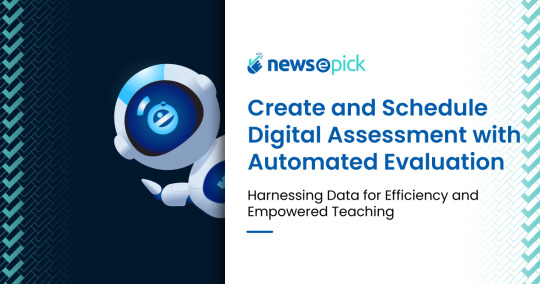
#Educational Technology#Automated Evaluation#Assessment Tools#Teacher Resources#Classroom Solutions#Education Analytics#Customized Assignments#School Management#EdTech Solutions#Interactive Learning#Student Engagement#Classroom Tools#EdTech Innovation
0 notes
Text
Transform Learning with Projectors: Expert Installation for Schools and Homes
Traditional learning tools have rapidly evolved to encompass advanced technologies in the current digital age. Of these, a projector is among the most eminent assets in classrooms and homes. Projectors used in learning environments will help educators and parents create an engaging, interactive experience that enhances understanding and retention of information in children. This article explores…

View On WordPress
#audiovisual solutions#Classroom Technology#Education Technology#expert installation#homes#impact of visuals#Interactive Learning#projectors#schools#transform learning
0 notes
Text
Transformative Digital Classrooms Powered by AI Technology
Mafatlal Technologies offers smart digital classroom solutions that enhance teacher productivity and student engagement. With AI-assisted lesson tools, interactive content, and seamless access across devices, the platform supports hybrid, inclusive, and experiential learning environments.
0 notes
Text
Unlocking the Power of Learning Management Systems (LMS)
Introduction -
More creative and effective approaches to education and training are quickly replacing old methods in today's fast-paced digital world. Learning Management Systems (LMS), potent platforms that have revolutionized the creation, distribution, and consumption of learning content, are at the vanguard of this change. Knowing how to maximize the potential of Learning Management Systems (LMS) can open up a world of opportunities for improving teaching and learning, regardless of your role as an educator, corporate trainer, or lifelong learner.
Do you know what exactly a Learning Management System is?
Fundamentally, a Learning Management System is a piece of software created to make the tracking, management, and delivery of training or educational courses easier. Consider it as an online learning environment where learners may access materials, engage in activities, and monitor their progress while instructors create, manage, and deliver content—a virtual classroom or training hub.

Why Use an LMS? This is the question which arises in everyone's mind?
The benefits of using an LMS are manifold, both for educators/trainers and learners:
Accessibility - An LMS makes learning available at all times and locations, enabling students to interact with the material at their own convenience and speed.
Scalability - An LMS can scale to meet the needs of various learning audiences and needs, regardless of the size of the class you're teaching or the workforce you're educating worldwide.
Interactivity - LMS platforms encourage student involvement and active participation by providing a variety of interactive elements like discussion boards, quizzes, and multimedia content.
Data-Driven Insights - Instructors can customize lessons for optimum impact by gaining vital data on learner behaviour, performance, and preferences through built-in analytics tools.
Efficiency: LMS solutions give teachers more time to devote to teaching and content production by automating administrative duties like enrollment, grading, and reporting.
Conclusion -
To sum up, learning management systems have completely changed how we instruct, learn, and receive training in the digital age. Educators and trainers may design dynamic, interactive, and personalized learning experiences that enable learners to reach their maximum potential by utilizing the power of LMS. Why then wait? Use an LMS today to embrace the learning of the future!
We, the group at MADMAN TECHNOLOGIES are doing our bit by making a difference in teachers by setting up LMS (Learning Administration Framework) and Smart class services.
Integrate the newest video conferencing technologies with your smart learning management system to give your students an engaging face-to-face learning environment. The development of best-in-class smart classroom solutions by Madman Technologies Pvt. Ltd. has assisted several institutions in enhancing the teaching and learning processes for both teachers and students.
For more information and details you may contact — [email protected]
Contact details - 9625468776

#information technology#it services#technology#it products#itservices#it technology#it solutions#learning management system#interactive learning#artificial intelligence
0 notes
Text

How Educational Mobile App Development Is Revolutionizing Online Learning in 2025Ready to shape the future of learning? Partner with our expert educational app developers and launch your innovative e-learning solution today!Discover how educational mobile app development is transforming online learning in 2025 with AI, AR/VR, and personalized solutions. Start building your EdTech app now!
#Mobile App Solutions for Education#Education Mobile App Development Company#Online Learning App Development#Top E-Learning App Development Company#E-Learning App Development#Educational Mobile Application Development#EdTech App Development Services#Custom Education App Development#Build Your E-Learning App#Custom Learning Management System (LMS) App#Mobile App Development for Education#Interactive Learning App Development#Mobile Learning App Development#E-Learning Mobile Solutions
0 notes
Text
What are these Levels -Code and Pixels IETM
Code and Pixels Interactive Technologies Private Limited (CNP) is an IT service provider based in Hyderabad (India). We provide end-to-end eLearning solutions and IETM development (INDIAN STANDARD IETM JSG 0852:2001, LEVELS 3,4,5 and European Aviation Standard IETM Level4 ), specialized in innovative use of technology.

#ietm level 4 software requirements#technical documentation#ietm developement#ietm document#ietm documentation#interactive electronic technical manual#Ietm Service Providers#Ietm Software Designers of India#Software Development Company#Elearning Solutions Company#E Learning Content Development Company#Online Education#Digital Education#Digital Content#Software Development Solutions#Elearning#Ietm Developers#Econtent Development#Elearning Solutions Providers#Econtent Developers#Econtent#Mobile Learning#What is Html5#Software Solutions#Software Development & E-learning Solutions
1 note
·
View note